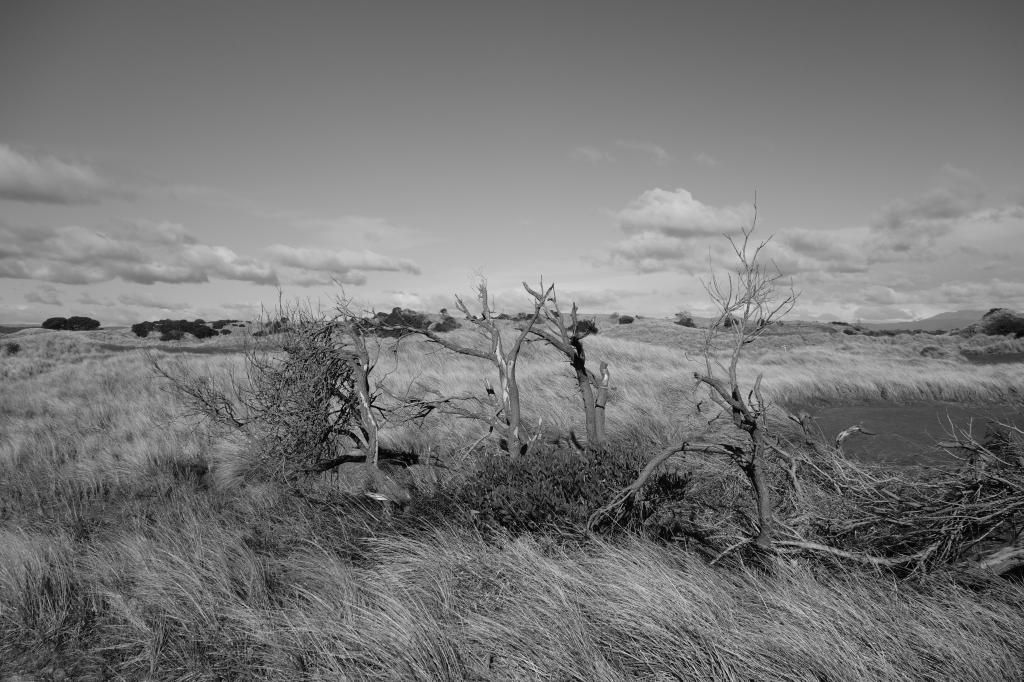Discussing Barnbougle without mentioning the journey to get there is foolish--and that was especially true in our case. After our harrowing 45-minute flight from Melbourne barely landed (after one missed approach and several very bumpy moments) two days earlier in Hobart, we made our way north to Barnbougle. The local radio stations cautioned everyone to avoid travel on the roads unless absolutely necessary, calling the weather the worst in Tasmanian history and citing windblown rooftops and the Prime Minister's canceled flight as proof. But we trekked on, even stopping at the famous Australasian Golf Museum in Bothwell. Amazingly, the curator--a delightful old woman in her 80s--had come in that day; she was very grateful for our arrival, as she was starting to question whether anyone would show. What a treat that museum, housed in an old schoolhouse, was.
Australasian Golf Museum (Bothwell, Tasmania)
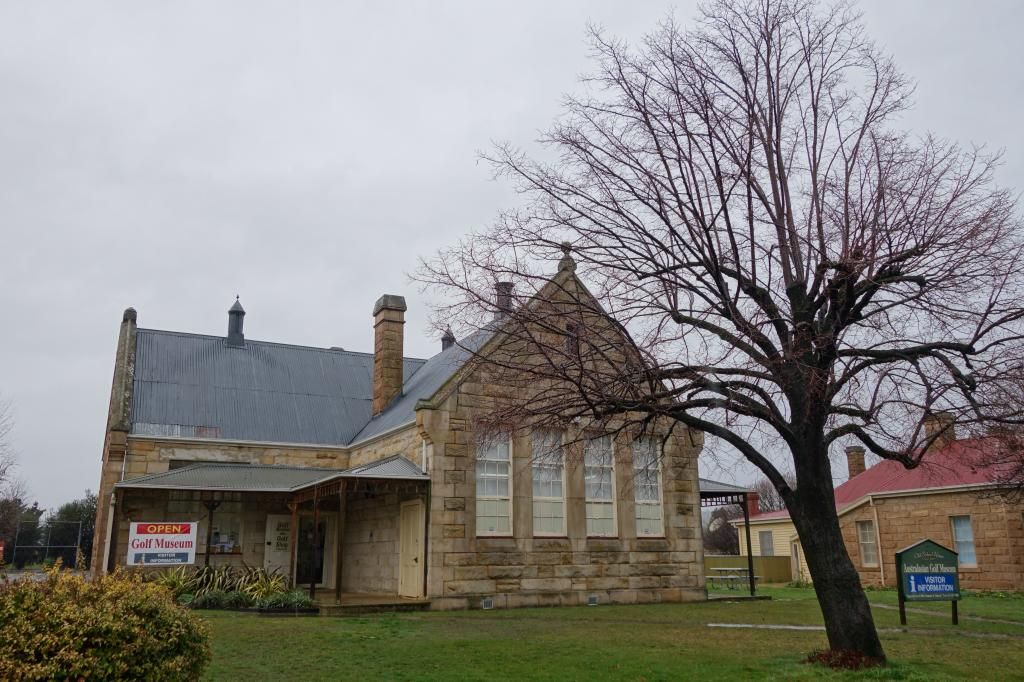
We tried to find the nearby Ratho Golf Course, Australia's oldest, but the weather was so bad we wouldn't have been able to see anything anyway. So we proceeded back to the route to Barnbougle, passing fallen tree limbs and tree trunks along the way. On arrival, I was shocked--given the storm that had just soaked Tasmania over the last three days--to see the sprinklers on throughout the course. I would later learn that the superintendents did so deliberately to ensure, to the best of their ability, that the sand from the bunkers would remain in them. As you'll see from the pictures, that didn't always work (indeed, several of the greens--especially the 4th and 17th at Lost Farm--were covered in sand half an inch thick). But despite it all, we were treated as royalty when we arrived--we were, after all, the only guests on the property that night. They kept both the restaurant (delicious) and the spa (heavenly, despite--or perhaps because of--the rain and wind off the Bass Strait (which separates Tasmania from mainland Australia) that buffeted and even leaked through the bottom of the windows) open for us. We stayed at Lost Farm, which is an excellent facility for golfers, replete with comfortable rooms, the spa and restaurant, and free laundry. (I can't speak to the multicolored cabins at Dunes, but they certainly look more charming, if less practical.)
Much to our delight, and surprise, we awoke the next morning to find that the storm had moved on, leaving beautiful clear skies--even if also some water-filled bunkers--behind. The first tee at Lost Farm, where we were scheduled to play our morning round, was all ours. After some helpful routing directions from the pros in the pro shop, we made our way onto golfing heaven. I must say that the windblown sand we encountered on several fairways (especially the 8th) and greens (the 4th, a great short par-3 hard along Bass Strait, was unputtable and, like the 17th, filled with workers trying to clear the sand) actually enhanced the experience, making the land seem even wilder than it was. Like the Dunes, Lost Farm starts with two relatively non-descript, even underwhelming, holes (a par-5 followed by a par-4 on both courses); I'd give the edge to Dunes on 1 and to Lost Farm on 2. Also like on Dunes, Lost Farm begins in earnest on 3, a classic short par-4 with a well-positioned center-fairway bunker and a small perched green. The stretch from 3 through 5 is the best on the course--with 3 being the best short par-3, 4 being the best par-3 (played directly next to Bass Strait), and 5 being the best long par-4 (a Road Hole-type tee shot around a huge dune in front of the tee). Six and 7 are solid, if unspectacular holes, while 8 is a very good par-5 with a tee shot not all that dissimilar, except for the righthand dune being smaller and farther from the tee, from the renowned one on 5. The stretch from 9-12 is probably the dullest on the course, but there are still great shots, if not great holes, in there--especially the tee shot on 11. Thirteen through 15 is another world-class stretch (of four, not three holes, as the first of the "extra" par-3 holes on the 20-hole course comes after 13). Thirteen is a par-4 that plays through a huge natural dune-framed valley, 13A is a difficult short par-3 to an elevated green with falloffs aplenty, 14 is the course's best hole, a par-4 that doglegs gently right along the edge of a huge dune and ends with a long, narrow green perched into the dunes fronting Bass Strait, and 15 is a brilliantly routed par-3 with a green sunken into a valley beneath a massive dune on the left on which the spa and restaurant rest (many architects, given the location of the tee by Bass Strait, would have tried to place the green also along the water, but Coore had already done that at the 4th). Sixteen is another solid long slightly dogleg-right par-4, 17 is a difficult uphill par-3, and 18 is a great par-4 finishing hole, playing straight inside the Bass Strait dune line back toward the clubhouse and offering beautiful views of a stunning property. But when you walk off the green and back toward the clubhouse, you're confronted with yet another "A" hole (18A, the course's 20th and final hole), a bet-settling gently uphill par-3 with a big green and grand bunkering. The course's routing, through massive dunes, along flatter farmland, and back, is superb (from what I've read, the routing at Friar's Head is similarly brilliant), and the overall feel and look of the property--the whitish and thick marram grasses (think Muirfield) are everywhere and provide a wonderful visual depth to all of the holes--makes up for those few holes that aren't world class. Coore's Lost Farm is a great "second" course to Doak's masterpiece at the Dunes, one that, in a reverse of what would come at Streamsong, is wider and more playable for the high handicapper than its more famous, and more highly ranked, neighbor. (In a further similar reversal, the Dunes has the better individual holes than Lost Farm, which can claim only two truly world-class holes (5 and 14).) One difference between the two courses to note in my photographs is that the fairways at Lost Farm, despite being right next door, are on much flatter terrain than those at the Dunes, which have truly glorious natural ripples and undulations throughout (the greens and green surrounds on Lost Farm are also much flatter, and less interesting, than those at the Dunes).
Barnbougle Lost Farm, Hole 1 (fairway)
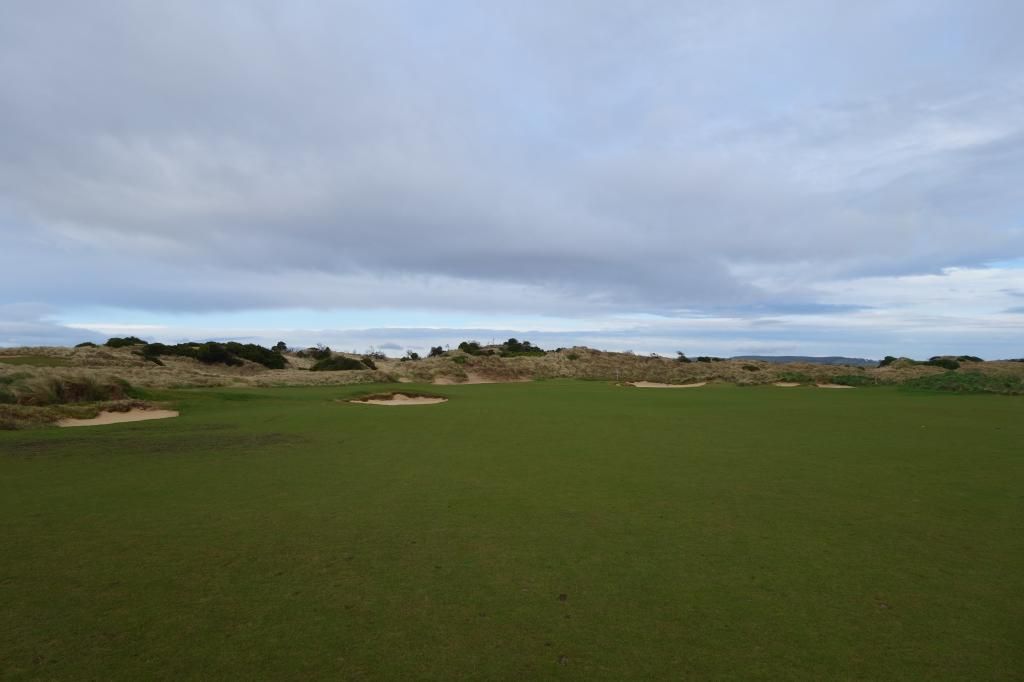
Barnbougle Lost Farm, Hole 2 (tee, with 17 green off in the distance on the right)
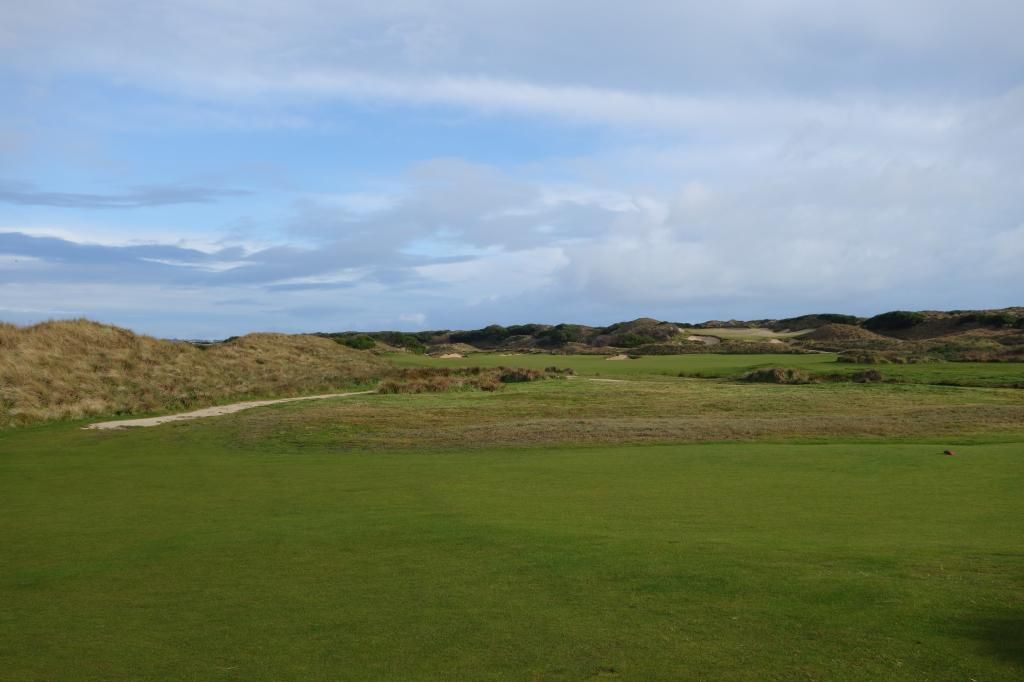
Barnbougle Lost Farm, Hole 2 (fairway)
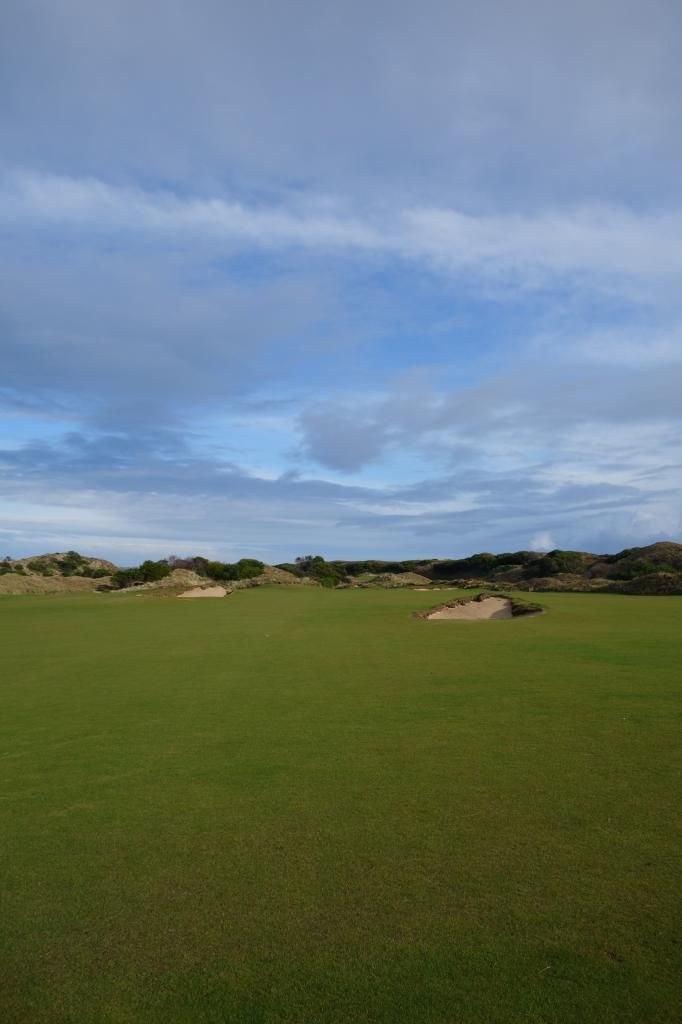
Barnbougle Lost Farm, Hole 2 (fairway, looking backward toward tee)
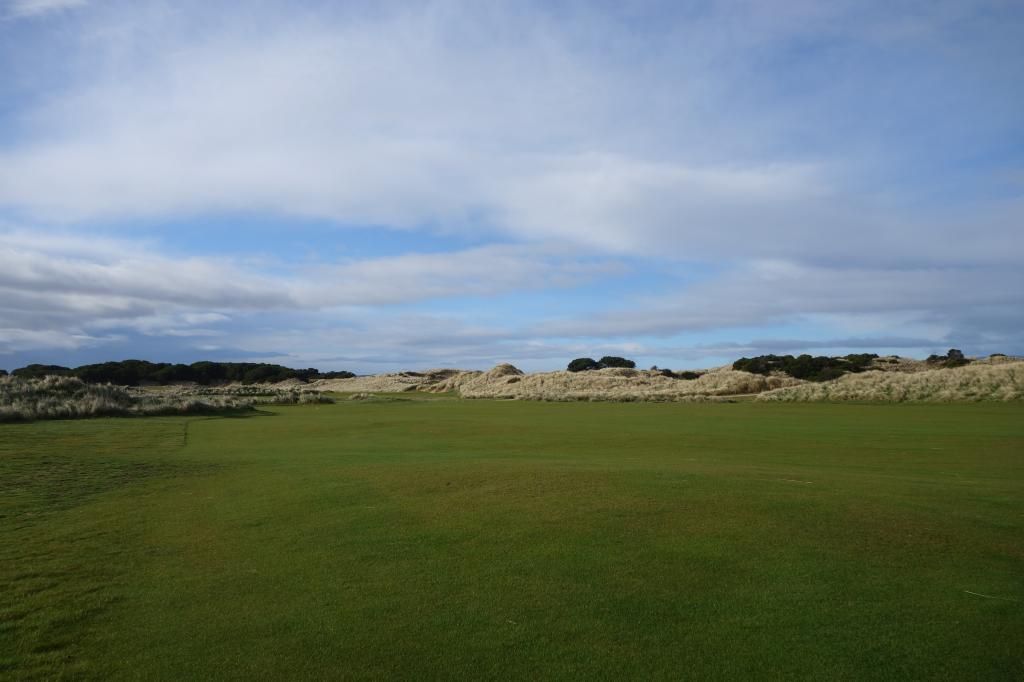
Barnbougle Lost Farm, Hole 3 (fairway)
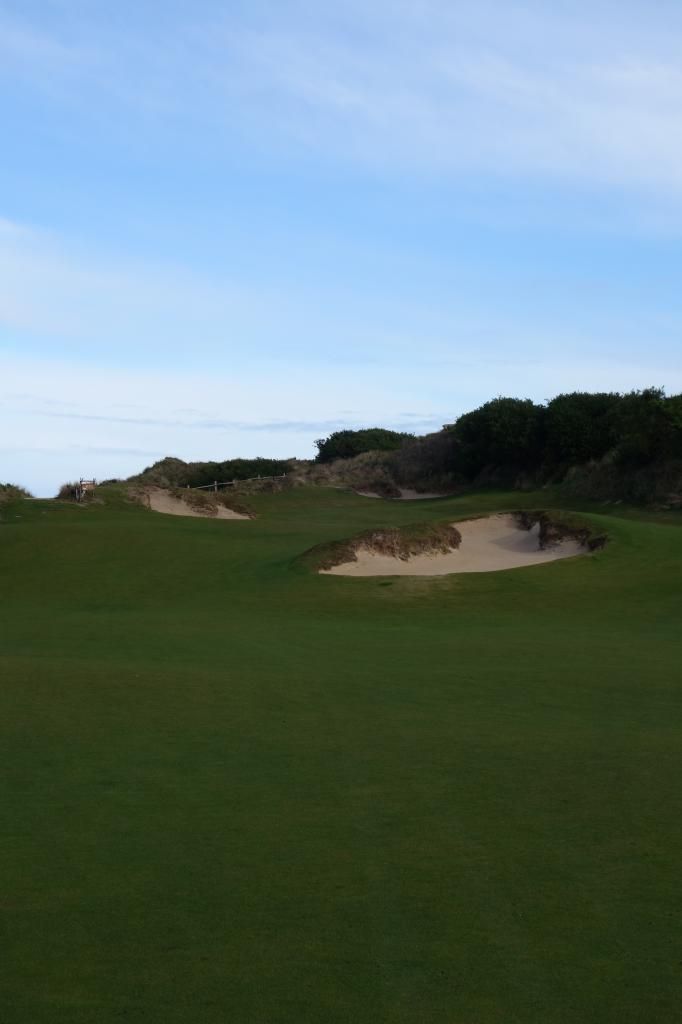
Barnbougle Lost Farm, Hole 3 (green, looking backward up the fairway)
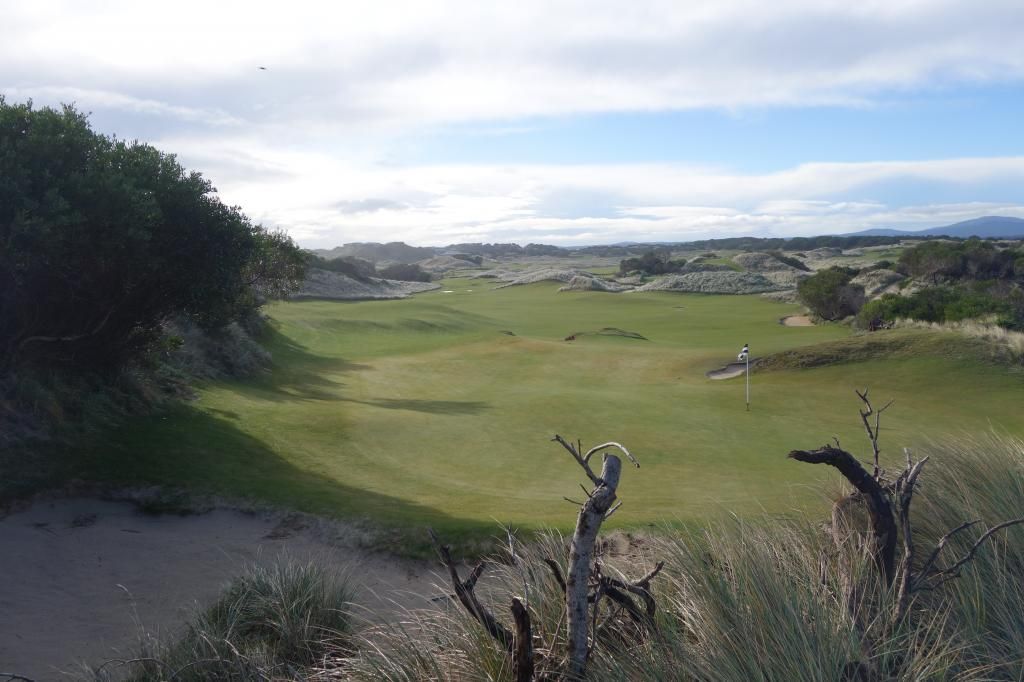
Barnbougle Lost Farm, Hole 4 (view from green right out over the Bass Strait)
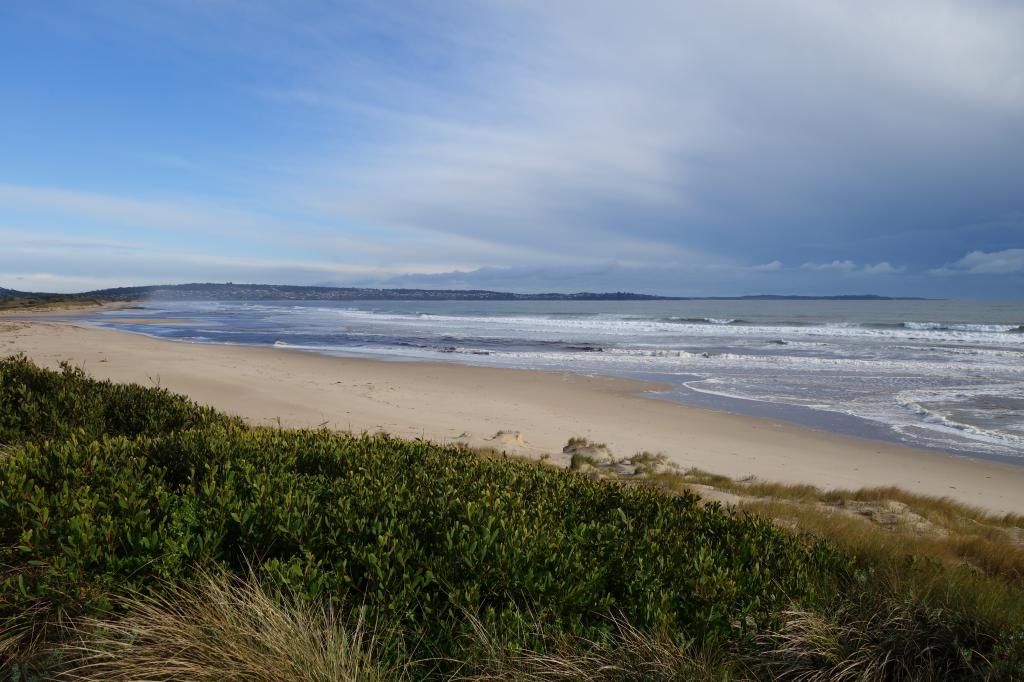
Barnbougle Lost Farm, Hole 5 (view from between 3 green and 4 tee) [N.B.: The huge dune on the right plays a big role off the tee, obscuring the right side of the fairway, a la the hotel on the 17th tee at The Old Course, as some have said.]
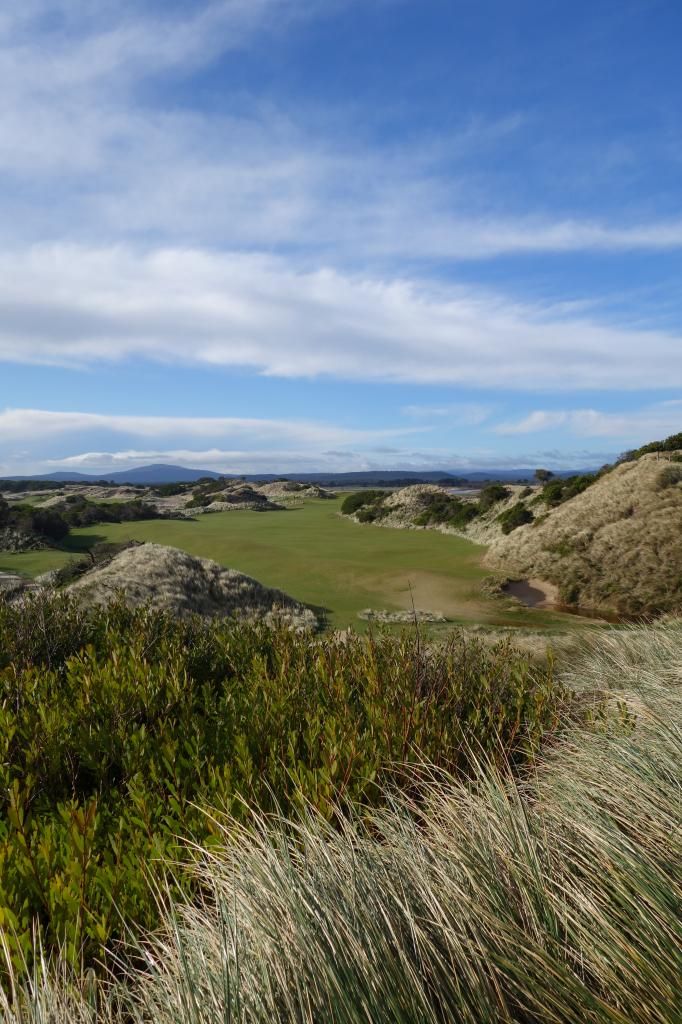
Barnbougle Lost Farm, Hole 5 (fairway)
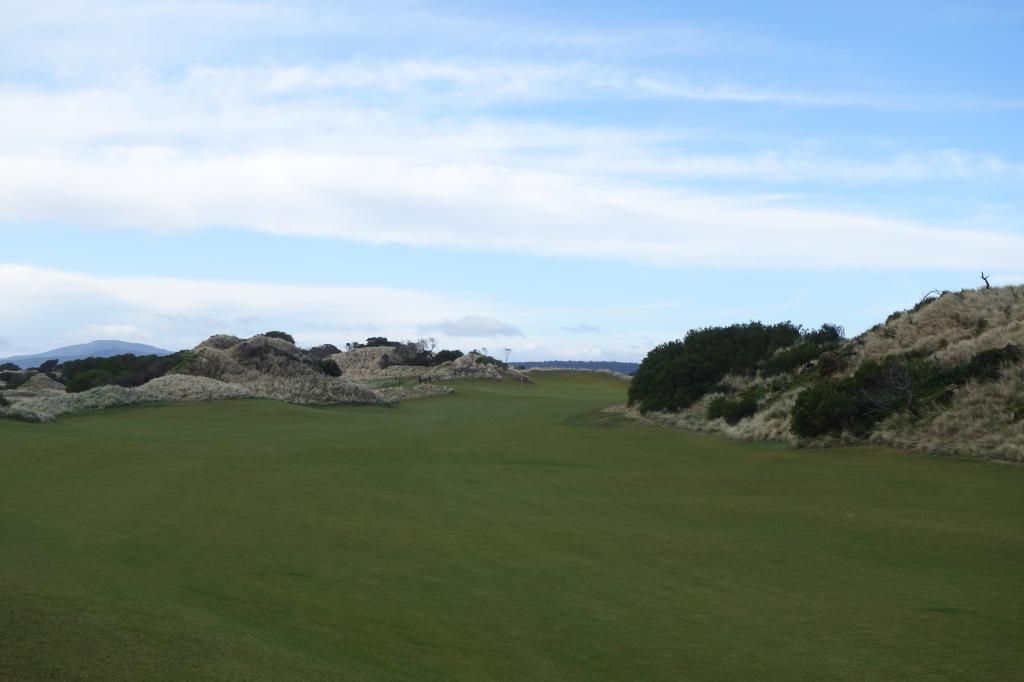
Barnbougle Lost Farm, Hole 6 (tee)

Barnbougle Lost Farm, Hole 6 (right greenside bunker, filled with rainwater deposited by the night before's storm)
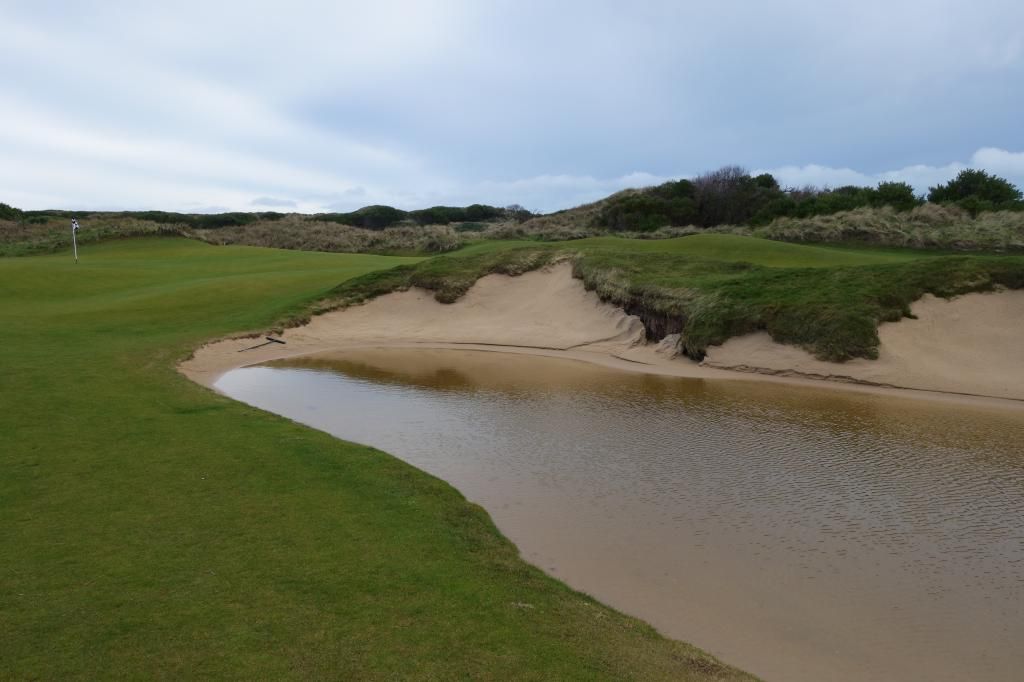
Barnbougle Lost Farm, Hole 7 (tee)

Barnbougle Lost Farm, Hole 7 (fairway)

Barnbougle Lost Farm, Hole 8 (left fairway bunker)
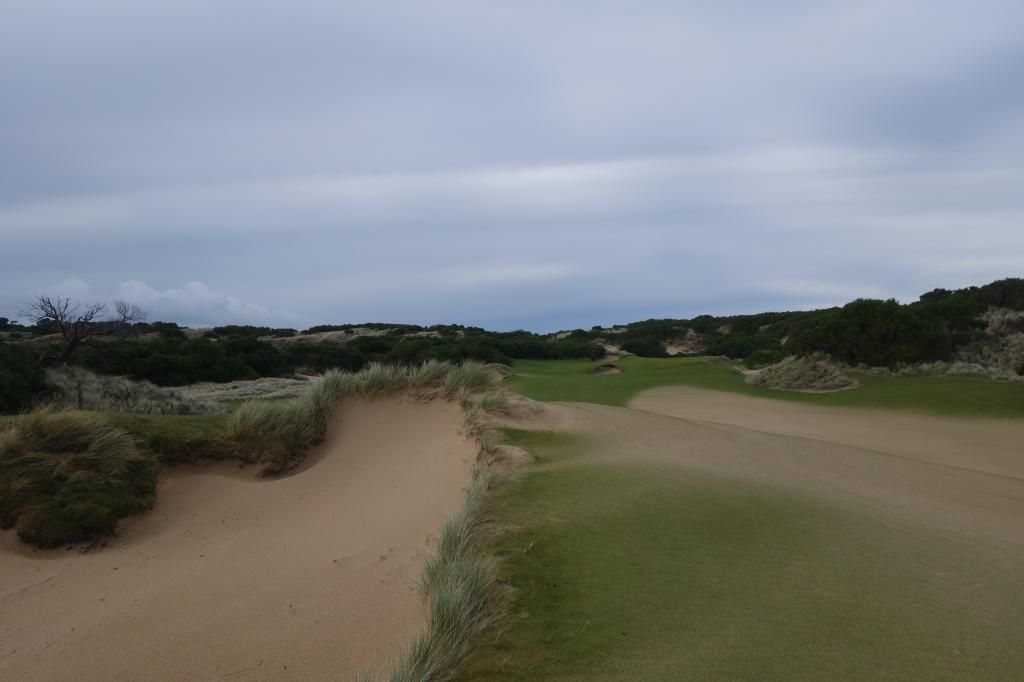
Barnbougle Lost Farm, Hole 8 (fairway, looking backward over the sand strewn across it by the wind that accompanied the night before's epic storm)

Barnbougle Lost Farm, Hole 9 (fairway, looking backward)
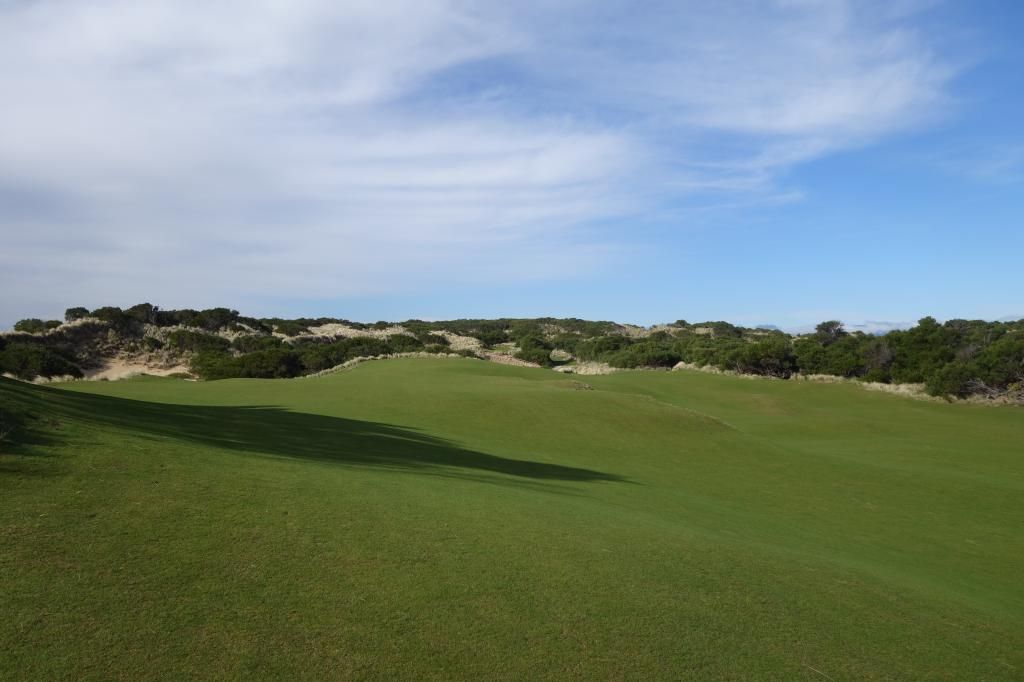
Barnbougle Lost Farm, Hole 9 (fairway)
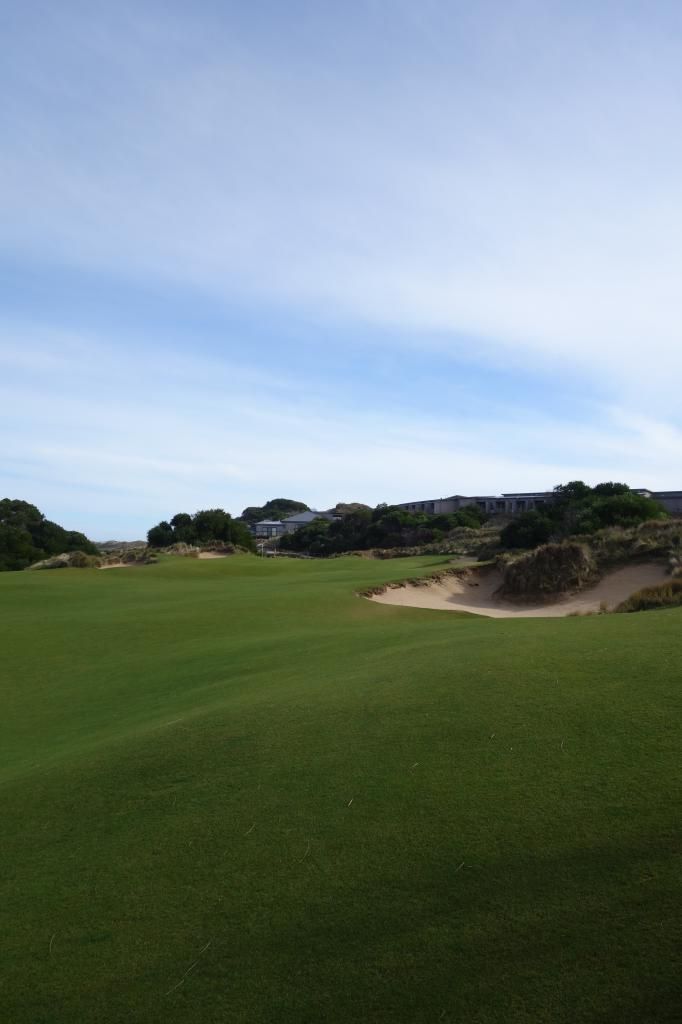
Barnbougle Lost Farm, Hole 10 (dune framing the right of the fairway)
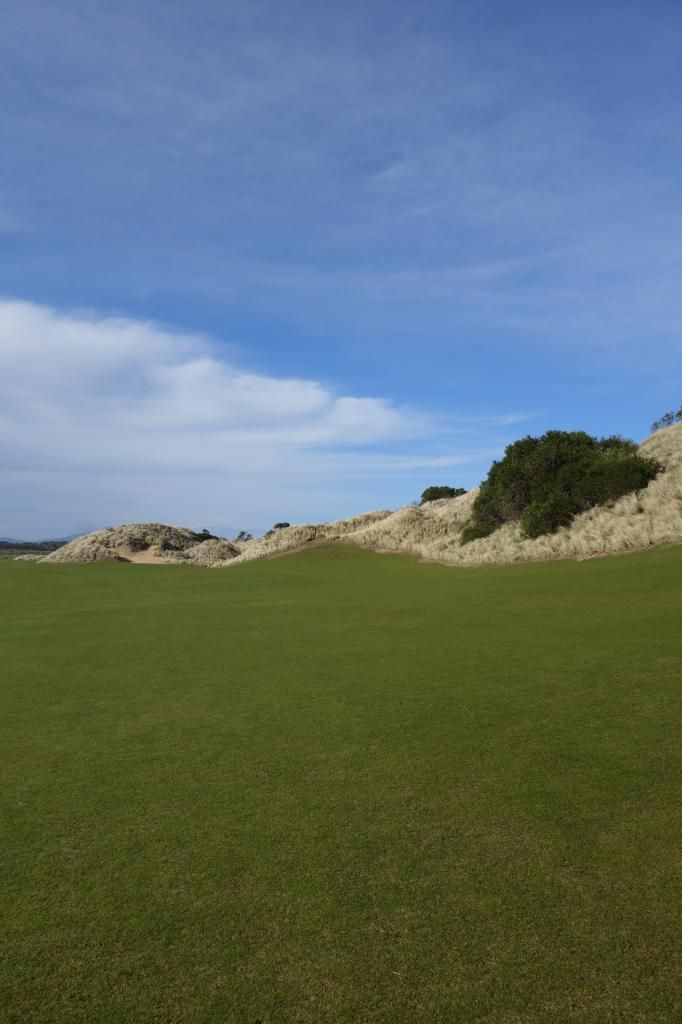
Barnbougle Lost Farm, Hole 11 (fork in the tee box)
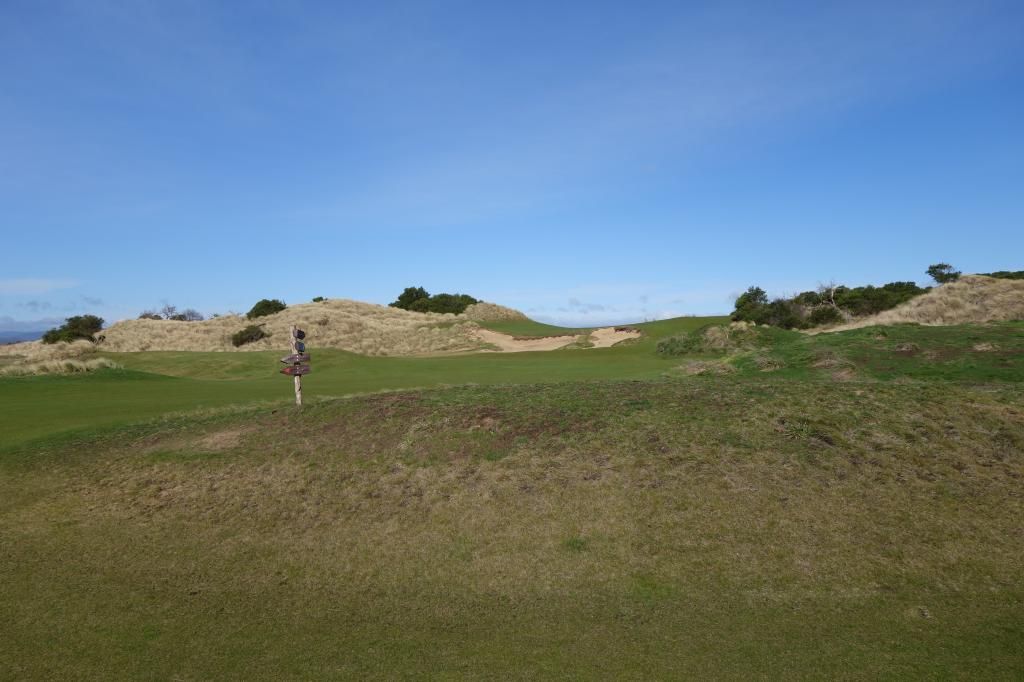
Barnbougle Lost Farm, Hole 11 (back-left tee) [N.B.: The landing area is over, or to the right of, the bunker in the face of the hill.]
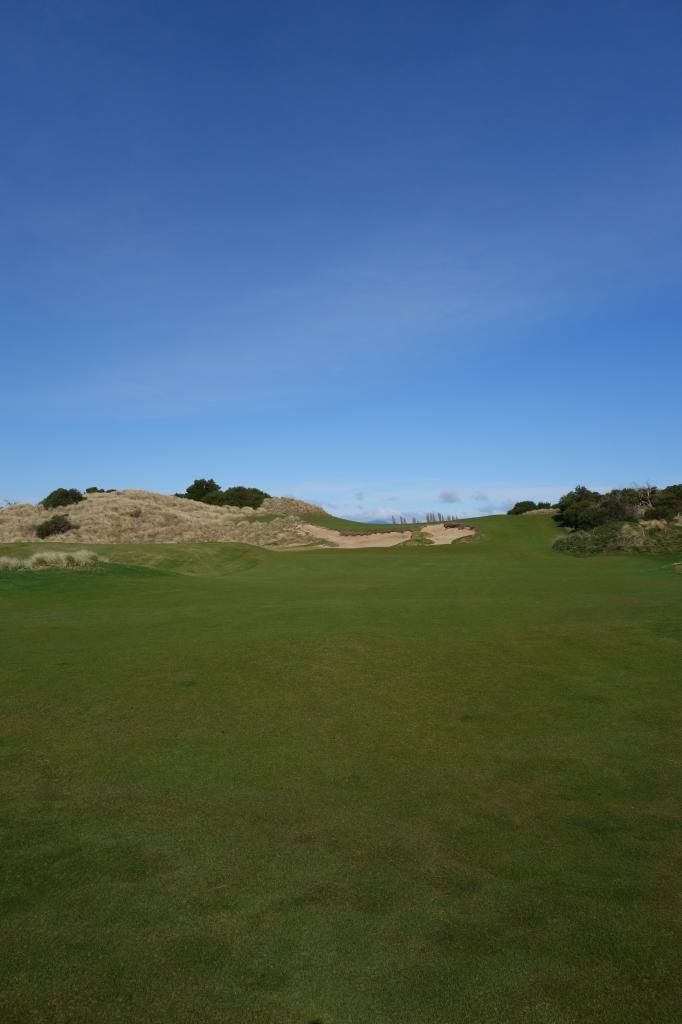
Barnbougle Lost Farm, Hole 11 (green)
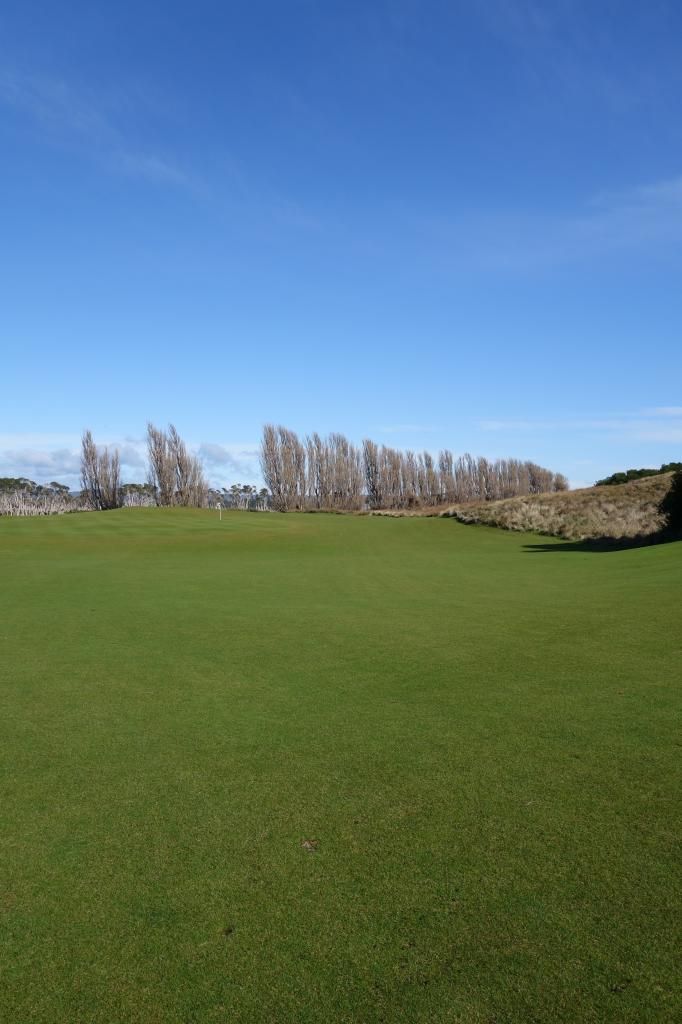
Barnbougle Lost Farm, Hole 12 (fairway)
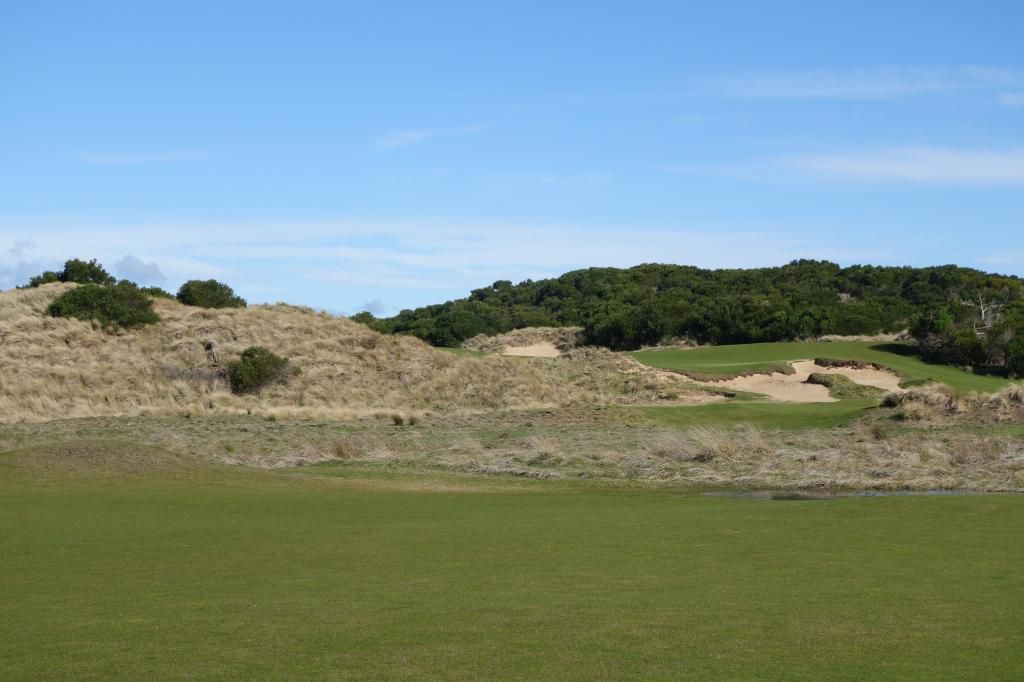
Barnbougle Lost Farm, Hole 13 (looking backward over the perfectly dune-framed fairway from the tee on 13A)
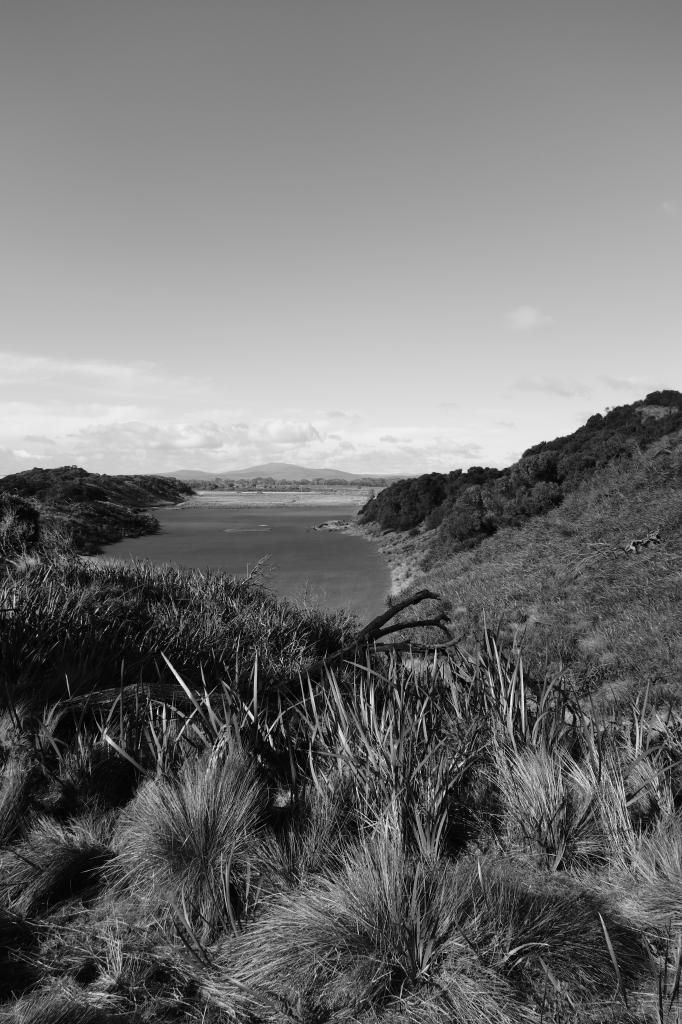
Barnbougle Lost Farm, Hole 13A (back-left tee) [N.B.: No wonder Sattler decided to keep the 20-hole routing; the two "extra" holes, both par-3s, are spectacular, this one in particular.]
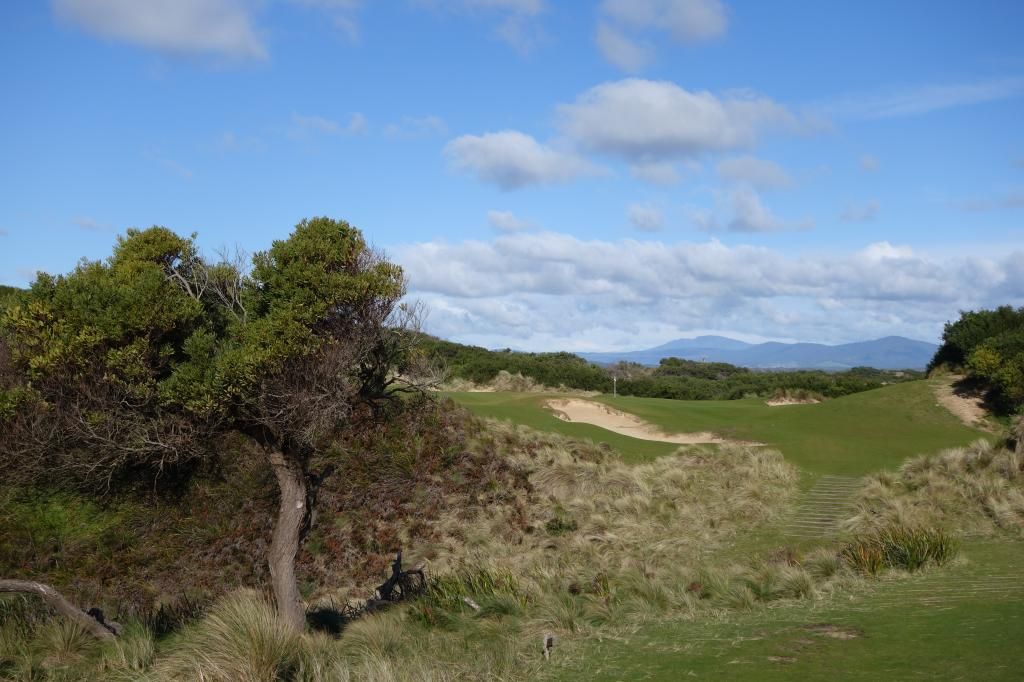
Barnbougle Lost Farm, Hole 13A (front-right tee)
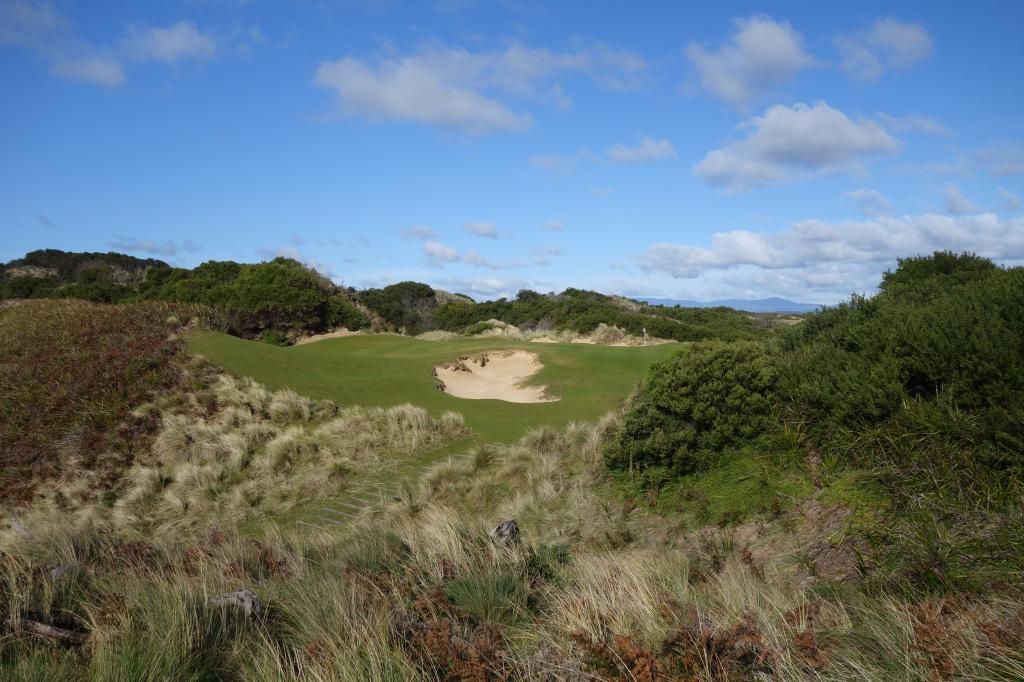
Barnbougle Lost Farm, Hole 14 (tee bench, with the green on 13A in the background)

Barnbougle Lost Farm, Hole 14 (tee)
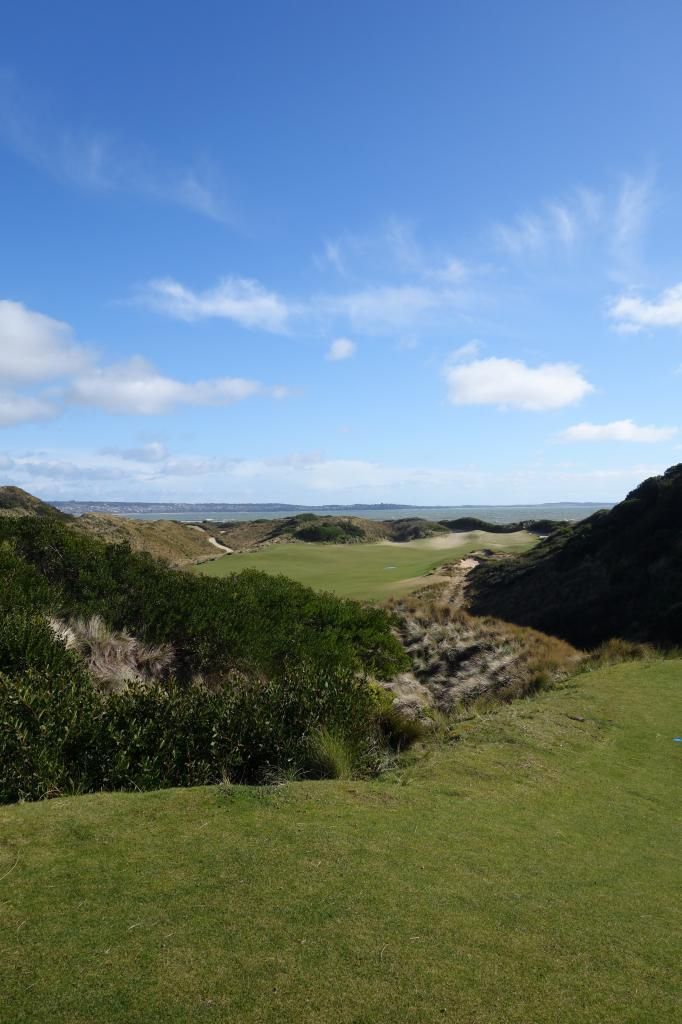
Barnbougle Lost Farm, Hole 14 (fairway, looking left up at the guestrooms)
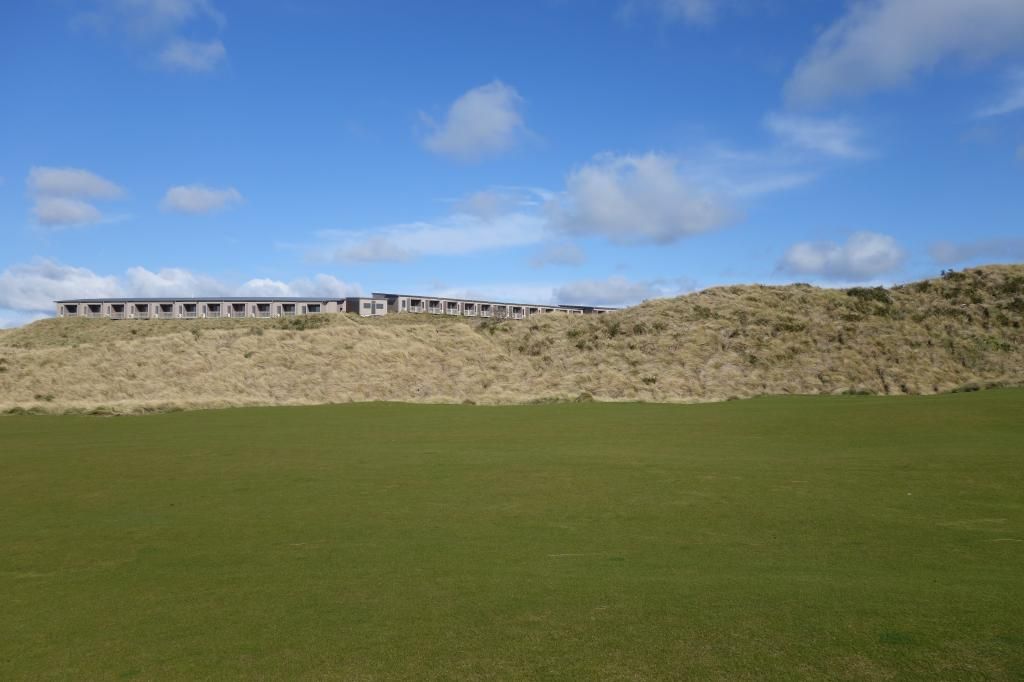
Barnbougle Lost Farm, Hole 14 (green, looking backward up the fairway)
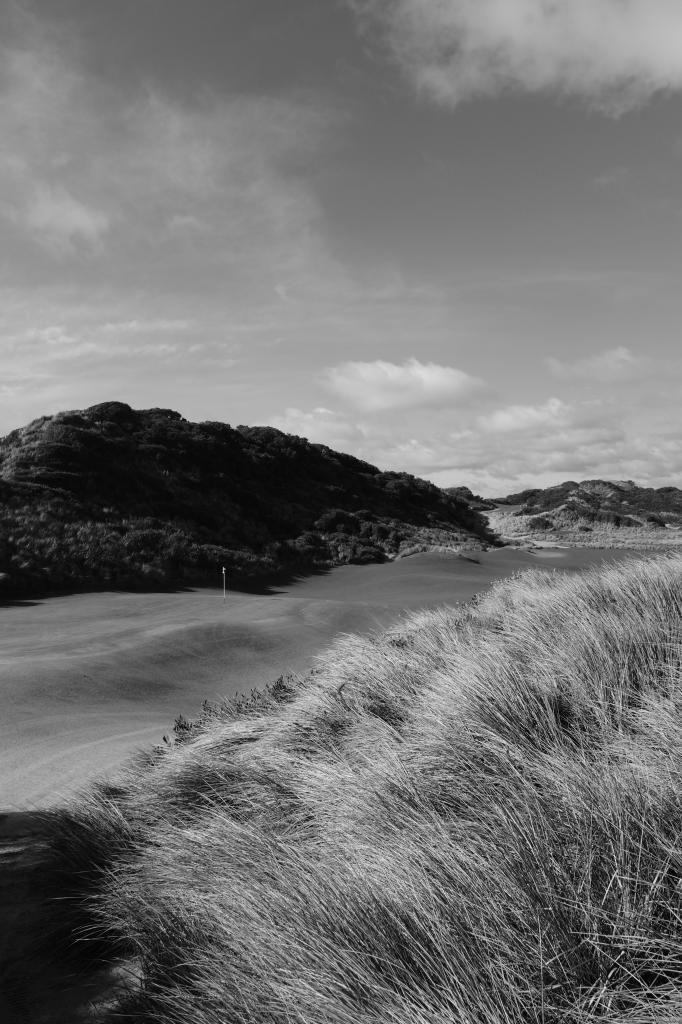
Barnbougle Lost Farm, Hole 15 (tee) [N.B.: The brilliance of this hole is the choice of green side; most architects likely would have been tempted to put the green hard along Bass Strait, but Coore had already done that on 4, and the valley formed by the humongous dune on the left allows for better green surrounds to play off of.]

Barnbougle Lost Farm, Hole 15 (view from tee right out over Bass Strait)
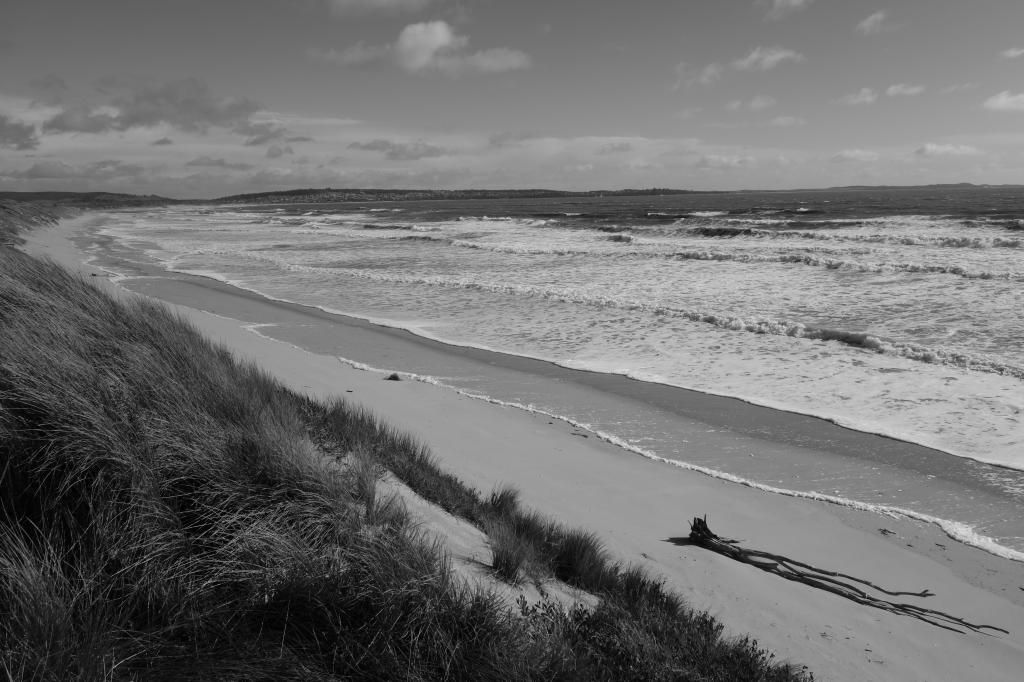
Barnbougle Lost Farm, Hole 16 (view from the tee left over the only lake on the property)
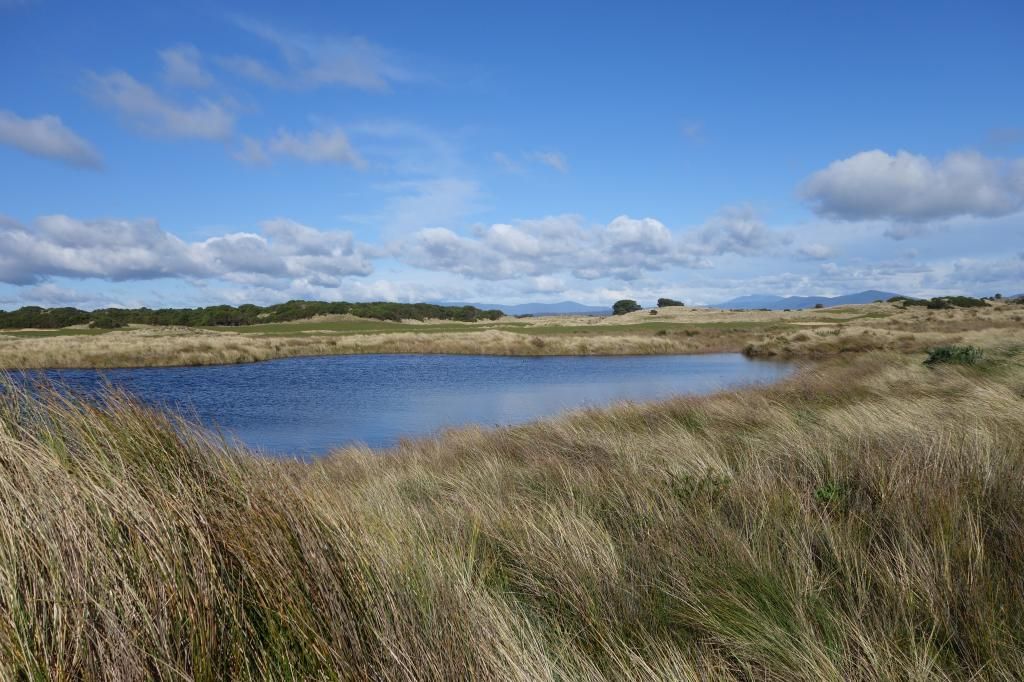
Barnbougle Lost Farm, Hole 16 (fairway)

Barnbougle Lost Farm, Hole 18 (view to the right of the tee, looking out over the course)
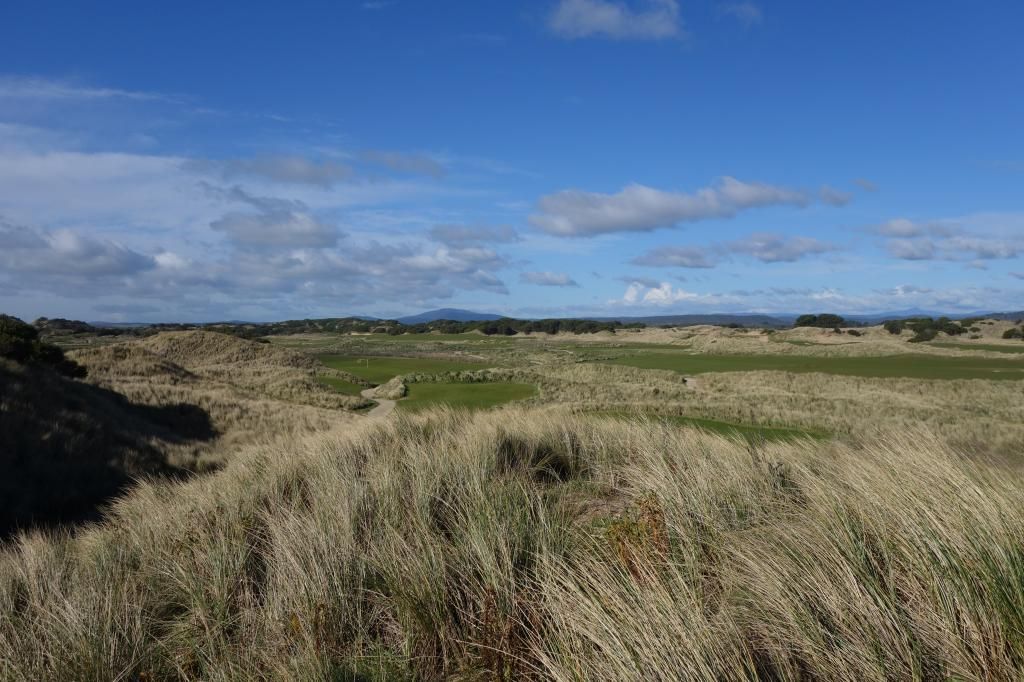
Barnbougle Lost Farm, Hole 18 (tee)
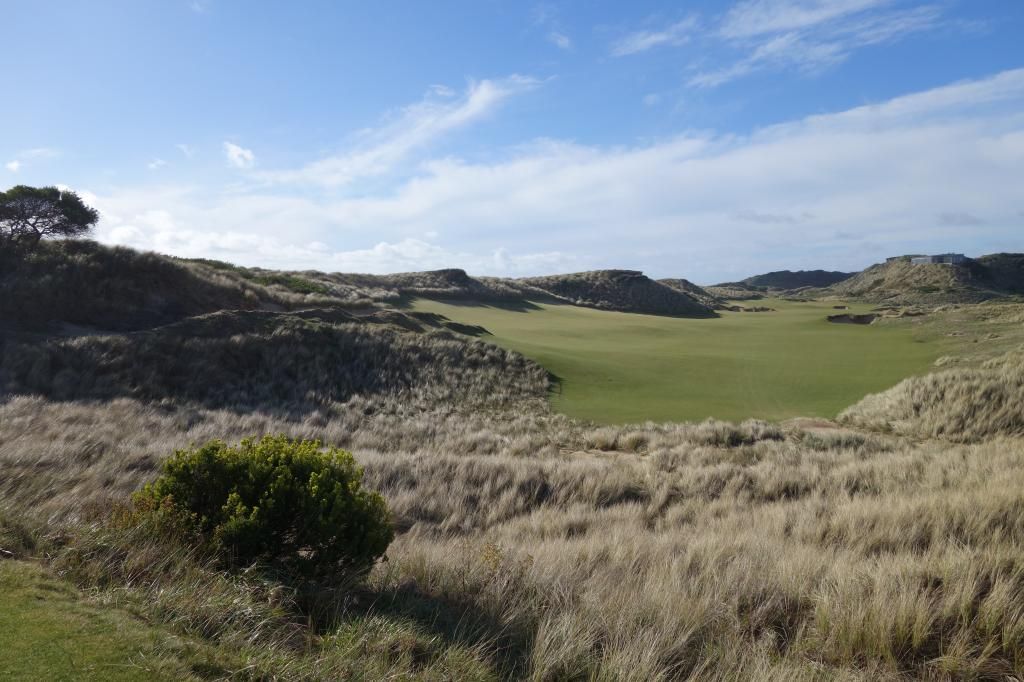
Barnbougle Lost Farm, Hole 18 (fairway)
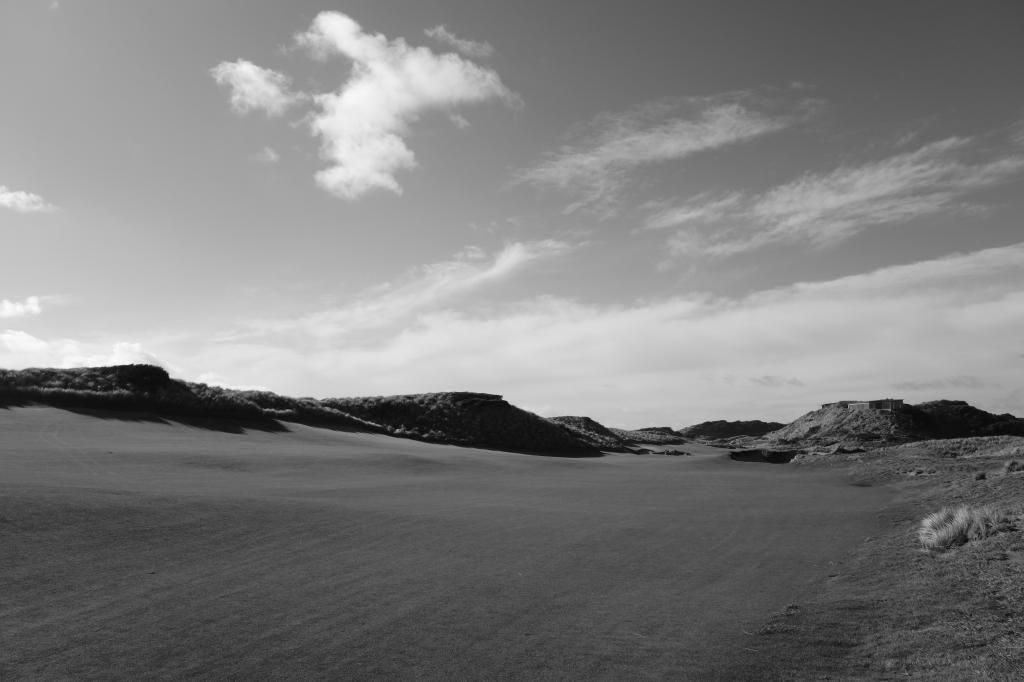
Barnbougle Lost Farm, Hole 18 (fairway)
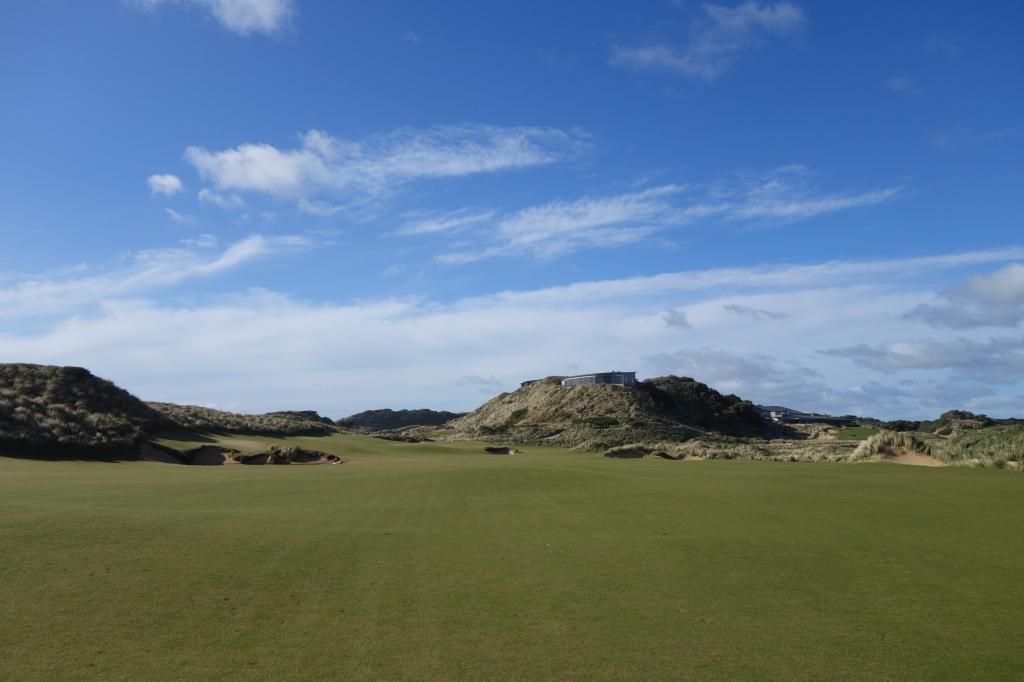
Barnbougle Lost Farm, Hole 18 (green, looking backward up the fairway)

Barnbougle Lost Farm, Hole 18A (tee)
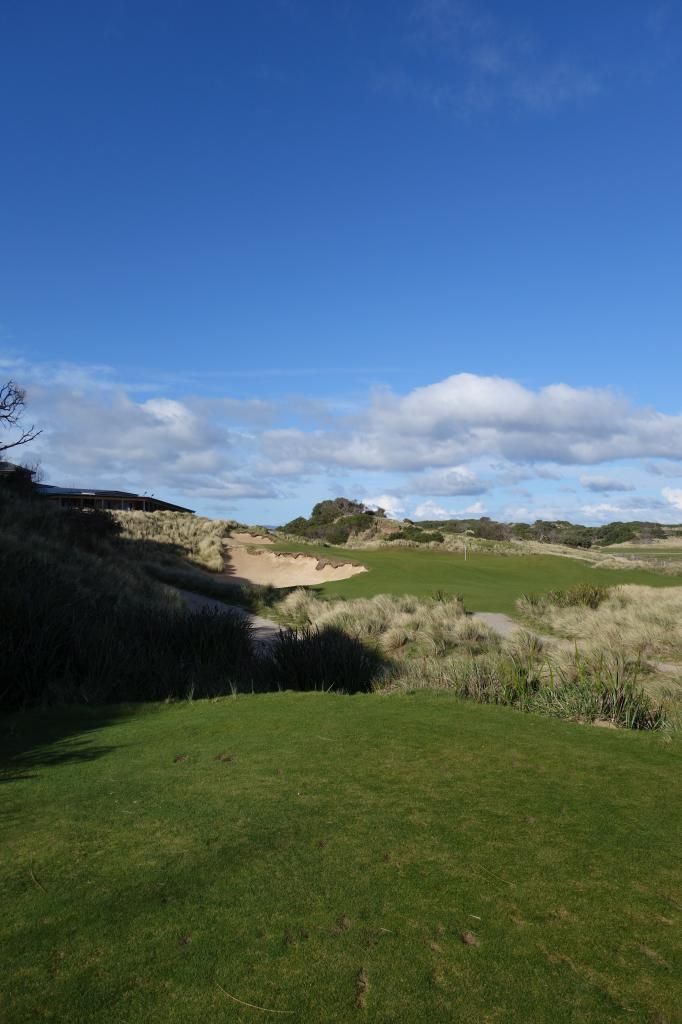
Barnbougle Lost Farm, Hole 18A (green)
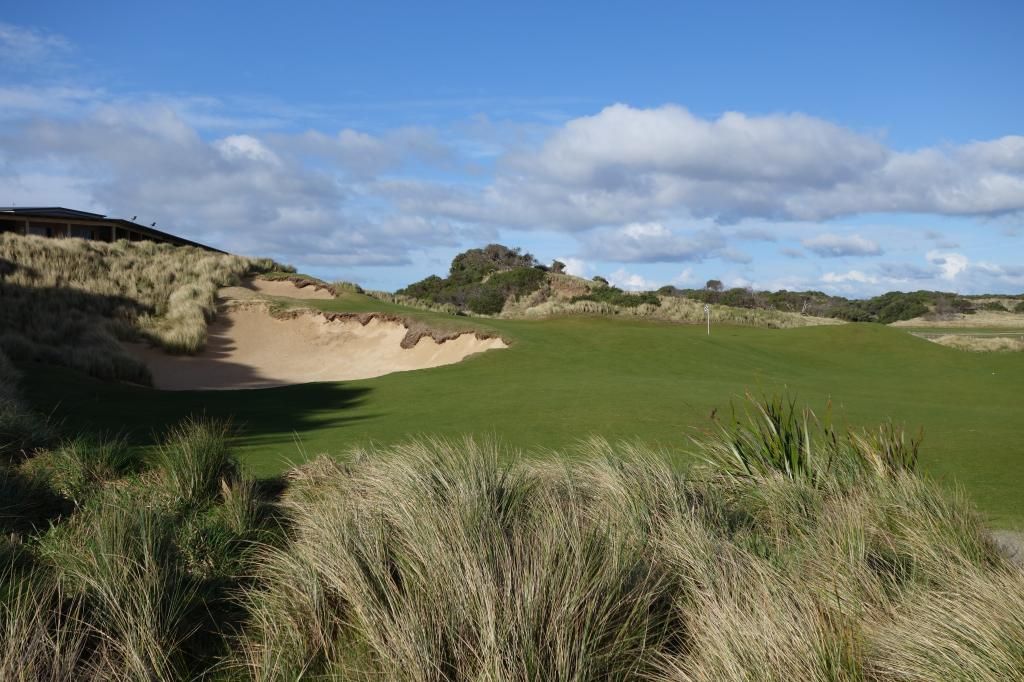
Barnbougle Lost Farm, Lost Tree
